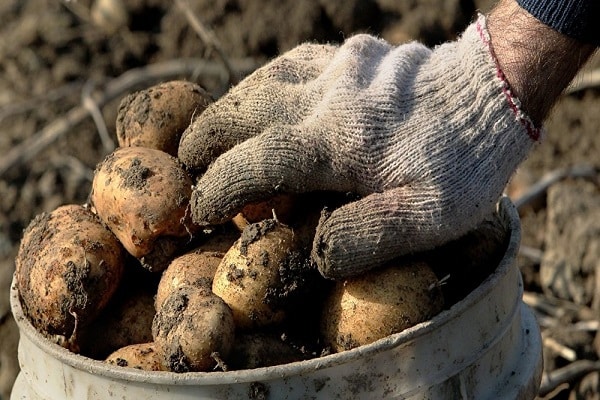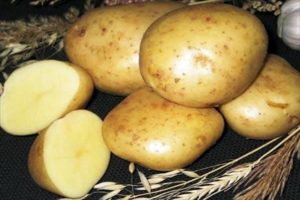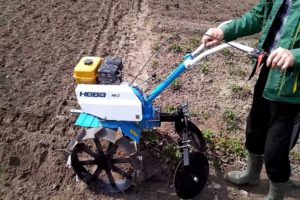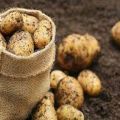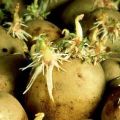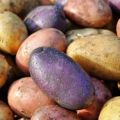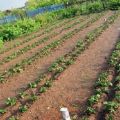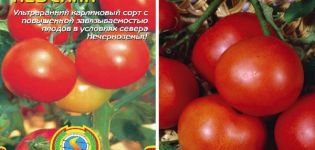Growing potatoes from seeds at home, planting and care
The yield of such a crop as potatoes decreases over time, and the quality of the vegetable becomes not the best due to the impoverishment of the soil. Therefore, the same seed potatoes used for planting lose their taste without renewal. In order to achieve a high return on a vegetable, it is necessary to change the planting material, observing the rules of crop rotation and agricultural technology.
How to grow potatoes from seeds?
Growing from seeds helps to obtain elite potatoes, which can produce healthy tubers for several years.
Grow potatoes both seedling and non-seedling methods.
Planting seeds for seedlings: terms and rules
For seedlings, seeds are placed in containers in spring, late March or early April. Potato containers are chosen ten centimeters high. They are filled with pre-disinfected soil, composed of humus, garden soil, sand and humus. The distance between the potato seeds should be at least five centimeters, and they are embedded to a depth of one to one and a half centimeters.
Before sowing, the seeds of the vegetable need to wake up. To do this, they are heated by placing them in a humid chamber with a temperature of 40 degrees for fifteen to twenty minutes. Then comes the drying of the seed to the state of flowability. To increase the germination of seeds, they are germinated in a damp cloth or toilet paper.

For seedlings, you need a warm place with good lighting. Seed germination can be accelerated by covering containers with plastic wrap to create a greenhouse effect.
The emerging seedlings are watered moderately, since the seedlings of the vegetable are prone to decay. In addition, due to the fragility of the sprouts, it is better to spray the ground with liquid from a spray bottle.
When growing potatoes in a seedling way, do not forget about proper care for the seedlings:
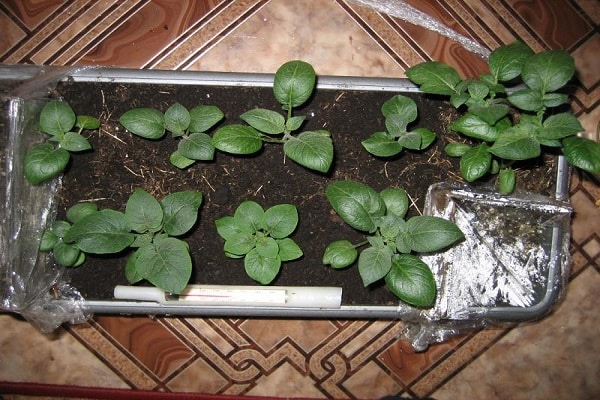
- For irrigation, use water at room temperature, trying to prevent moisture from getting on the leaves.
- The potatoes are fed with urea by taking ten grams of fertilizer per ten liters of water.
- The soil is loosened regularly after watering.
- When plantings are thickened, weak and diseased seedlings are removed.
Potato seedlings should be transplanted into open ground in mid-May. During the procedure, they try not to damage the resulting seedlings, otherwise the seedlings will die.

Seedless potato sowing
Plant potatoes seeds and immediately to a prepared bed. Seeding begins in early or mid-May, when the threat of night frosts disappears, and the soil warms up to plus fourteen degrees. The bed is dug up in advance, then burrowing through the ground.Rows and holes for sowing are planned, having determined a distance of fifty to sixty centimeters.
Instead of holes, grooves four to five centimeters deep are used for sowing potatoes. Before planting, the bed is spilled with water, spreading the seeds into damp ground. Then a layer of mulch 1 centimeter thick is placed on top.
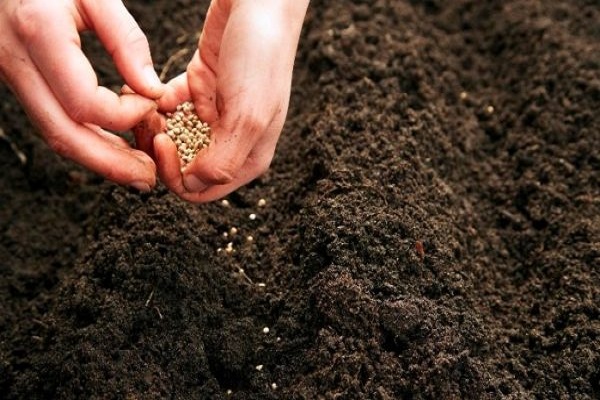
You can cover the beds with a covering material so that the seeds are not affected by low temperatures. After sprouting, after five to ten days, take care of the vegetable plant as usual. Seedlings are thinned out in case of strong planting density when they have two real leaves.
Growing potatoes from seeds is successful if the agricultural technology of cultivating a vegetable plant is followed. Then in the fall they get tubers that will help renew the planting material for several years.

Advantages and disadvantages of the procedure
Even experienced vegetable growers do not always know how to get a high-quality potato product. Some change potatoes by buying ready-made tubers in a store or market. But this does not always help to renew the potatoes in the garden. After all, tubers can rot or carry causative agents of the disease. But at home, you can really get elite varieties of potatoes from seeds.
The advantages of this method are that the grown potatoes:
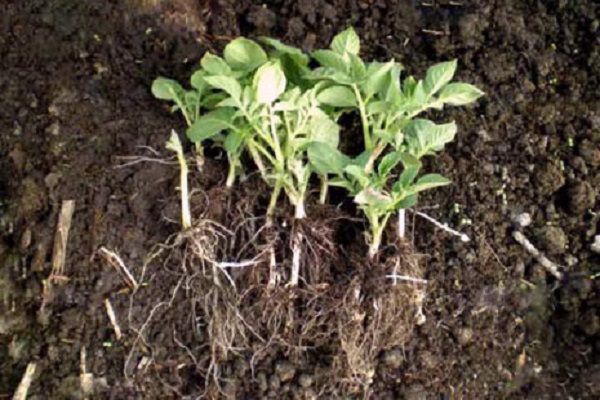
- will not hurt;
- will improve its taste;
- will give high yields in unstable climatic conditions;
- will have strong immunity to many diseases of the vegetable crop.
Another nuance in favor of growing from seeds. Tubers for planting are expensive, and the cost of elite potato seeds is much lower.
The only drawback of this method of obtaining high-quality tubers is the laboriousness of the growing method. In order for the seedlings of the vegetable to survive, planting and caring for them must be competent.
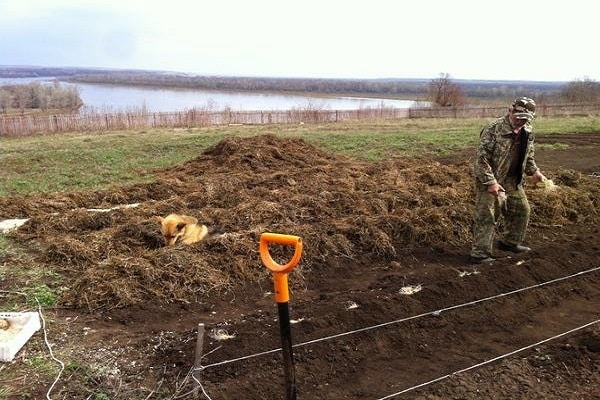
How to collect potato seeds?
Potato seeds are purchased in specialized stores. But you can also get seeds yourself that will give a high-quality crop of tubers. And you will not have to think about how to update the planting of a vegetable in the garden.
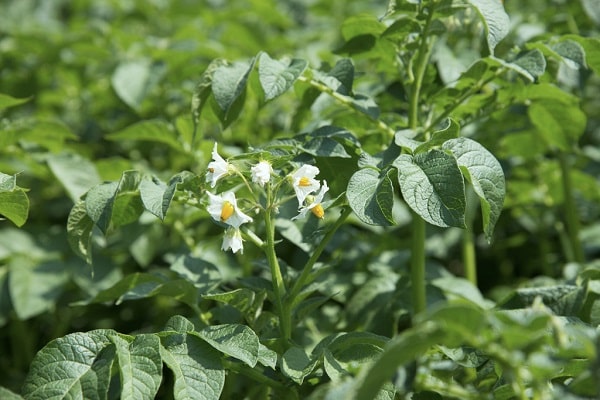
The photo shows that the potato seeds are in the green berries that form on the stems of the plant. Usually these are unripe fruits, and the seeds in them are not yet ready for planting. To make them suitable for sowing, they are harvested when the berries lie down for a while indoors, ideally suspended in gauze bags. They need warmth and light to ripen quickly.
When the green fruits become soft, seeds are squeezed out of the berries. They are washed under running water and laid out to dry. Store seeds until spring in paper bags. The germination capacity of seed collected from potatoes is low. It should be prepared more than necessary for planting. Seeds retain their qualities for two years.
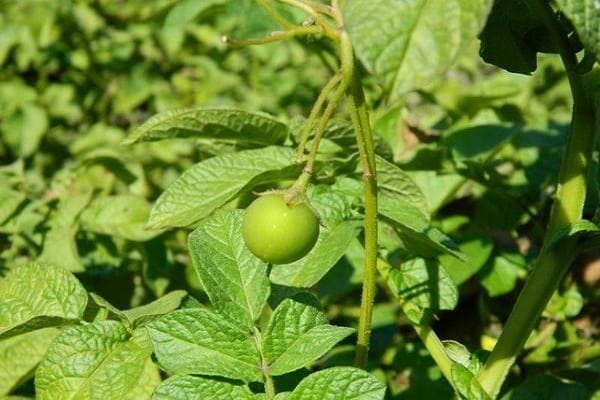
Potato seedling care
Seed potatoes require specific growing conditions. For active growth, he needs loamy and sandy loam soils, provided with a sufficient amount of useful elements.
Before planting seedlings, humus is introduced into each hole in an amount of two hundred grams. Needed for potatoes in soil and superphosphate (ten grams per well), and potassium salt (five grams). The ingredients are thoroughly mixed with moist earth.
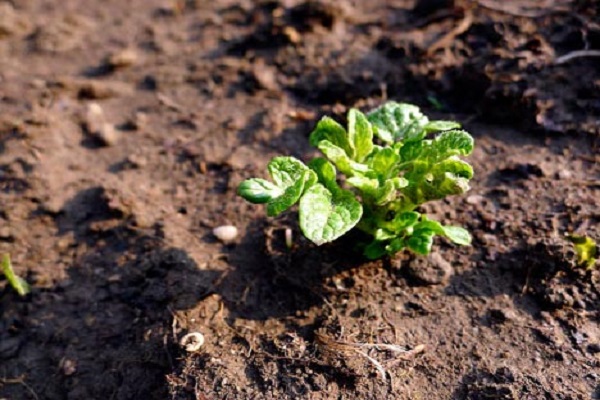
It is advised to place two vegetable seedlings in one hole. After watering, the rows of young seedlings are harrowed to rid the potatoes of weeds.
The description of caring for a vegetable plant includes procedures:
- furrow irrigation once or twice per season during dry summer, when tuberization begins;
- feeding with wood ash, mineral fertilizers, mullein;
- hilling, as a result of which additional underground stems are formed;
- loosening row spacings to a depth of five to seven centimeters.
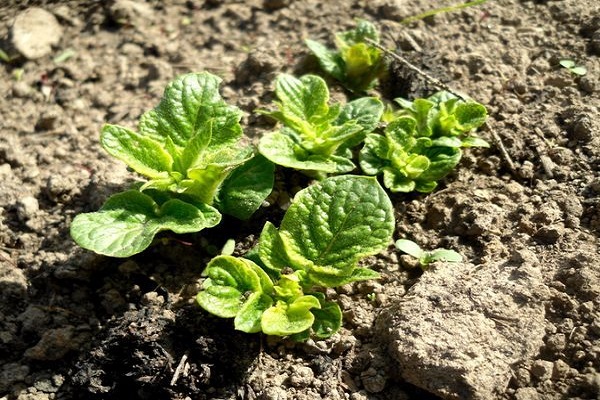
Of the important methods of increasing the yield of potatoes, hilling should be distinguished. It is carried out only when the soil is moistened. In dry soil, underground stems, stolons, will not form. For the first time, seed potatoes are spud eight to ten centimeters, when the plant stem reaches a height of twenty centimeters, then before flowering.
When there is a powerful development of tops in a vegetable and the appearance of weak ovaries, then one cannot do without adding wood ash and phosphorus-potassium fertilizers in liquid form to the aisles. For the procedure, thirty grams of superphosphate and fifteen grams of potassium salt are dissolved in a bucket of water.
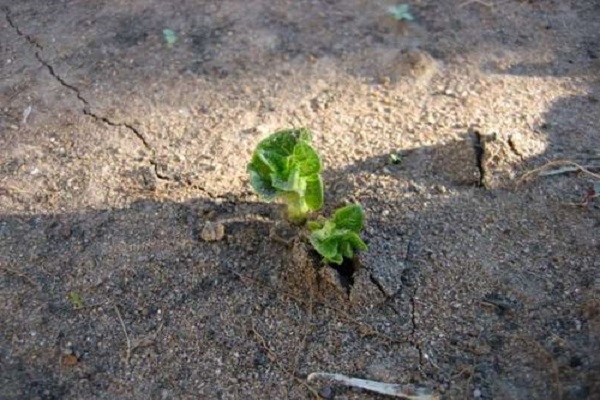
Potatoes grown from seed produce strong tubers. In the first year there will be only a few of them, and by weight they will not please in size. But in the future, these nodules will become the basis for high yields of elite varieties.
Reviews about the method of growing tubers from seeds are only positive. The only difficulty is that it is difficult to prepare the seedlings. You can watch the video how to grow potato seedlings, how to transplant them to the beds correctly.
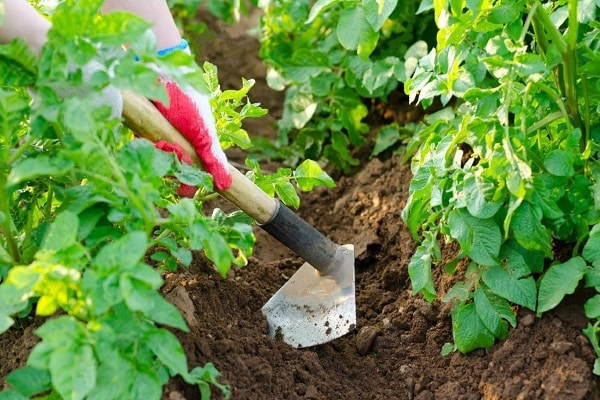
How to protect seedlings from diseases and pests?
Young shoots of potatoes susceptible to many diseases, among which are common fungal: late blight and ring rot.
Late blight can attack adult plants at a time when the moisture in the soil and air rises. The leaves begin to be covered with brown spots on top, and white bloom below. Both stems and tubers suffer from potato rot. Hard spots on the roots indicate the progression of the disease, then they completely rot. To preserve seed potatoes, to prevent disease, the stalks of the vegetable should be spud high. And the diseased tops are removed and destroyed before harvesting the tubers. Affected plants are treated with Bordeaux liquid three times over the summer.
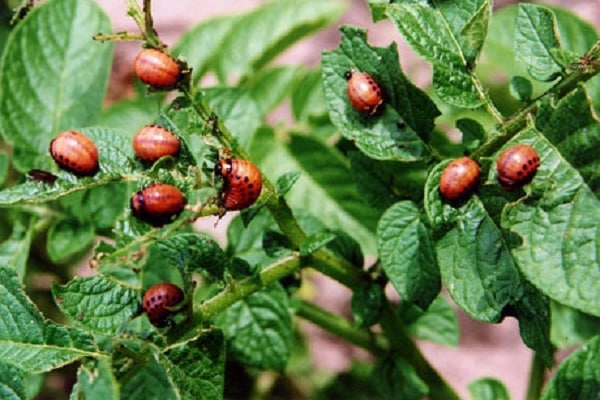
Ring rot is recognized by its rounded cream-colored spots with glassy patches. If diseased tubers are stored, the entire crop will die.
Among the pests of culture, the Colorado potato beetle and its larvae come out on top. But to protect against the parasite, there are many chemical and folk remedies that must be used several times during the growing season of the vegetable plant.
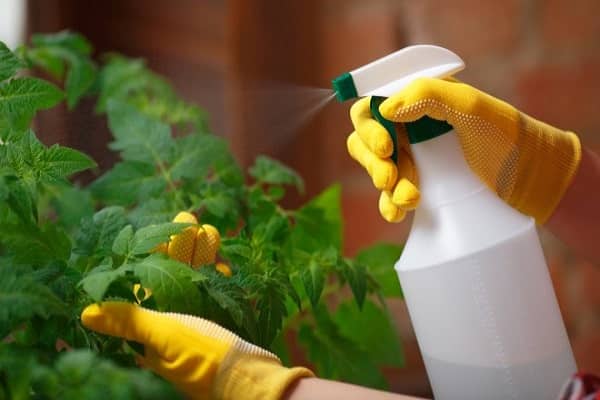
Harvesting and storage of crops
They begin to harvest the potatoes when the tops are dry. The dug nodules leave everything, despite their small size. Be sure to dry the potatoes under an awning or in a barn. Drying should take at least three to five days.
It is necessary to keep seed potatoes intact until spring, so ideal conditions are created for it:
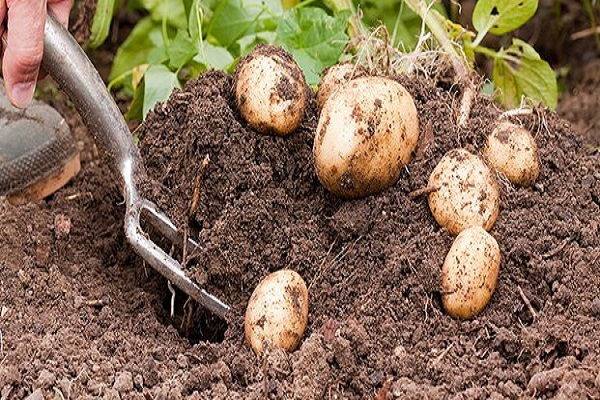
- Before laying the vegetable tubers in the cellar, the room is treated with table salt (150 grams) diluted in ten liters of water, slaked lime (two kilograms), copper sulfate (one kilogram). The cellar is also ventilated, and then tubers are stacked in boxes made of wooden planks. To maintain their qualities, potatoes need a temperature of two to four degrees above zero and a humidity of seventy to eighty percent.
- You can also place potatoes on a glazed balcony or loggia. Top boxes with tubers are covered with a warm blanket or straw.
- If there are no conditions for storing root crops, then a refrigerator is also suitable. It is safer to place the tubers on the bottom shelf in a paper bag.
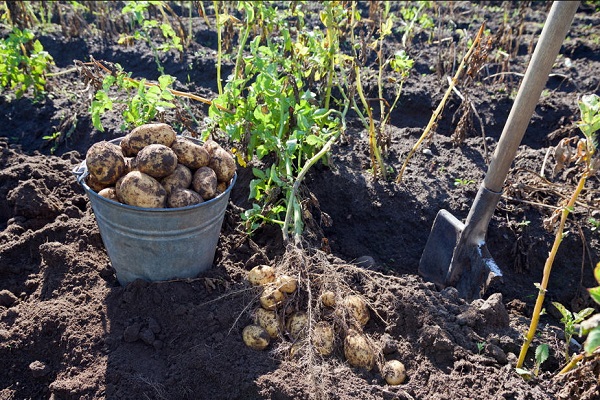
New varieties of vegetables grown from seeds can be stored in the apartment, if the storage conditions are monitored during the winter. It is necessary to constantly inspect the fruits in order to remove damaged and rotten ones in time.
The next year, seed potatoes will give more tubers, and gradually the vegetable yields will grow.
